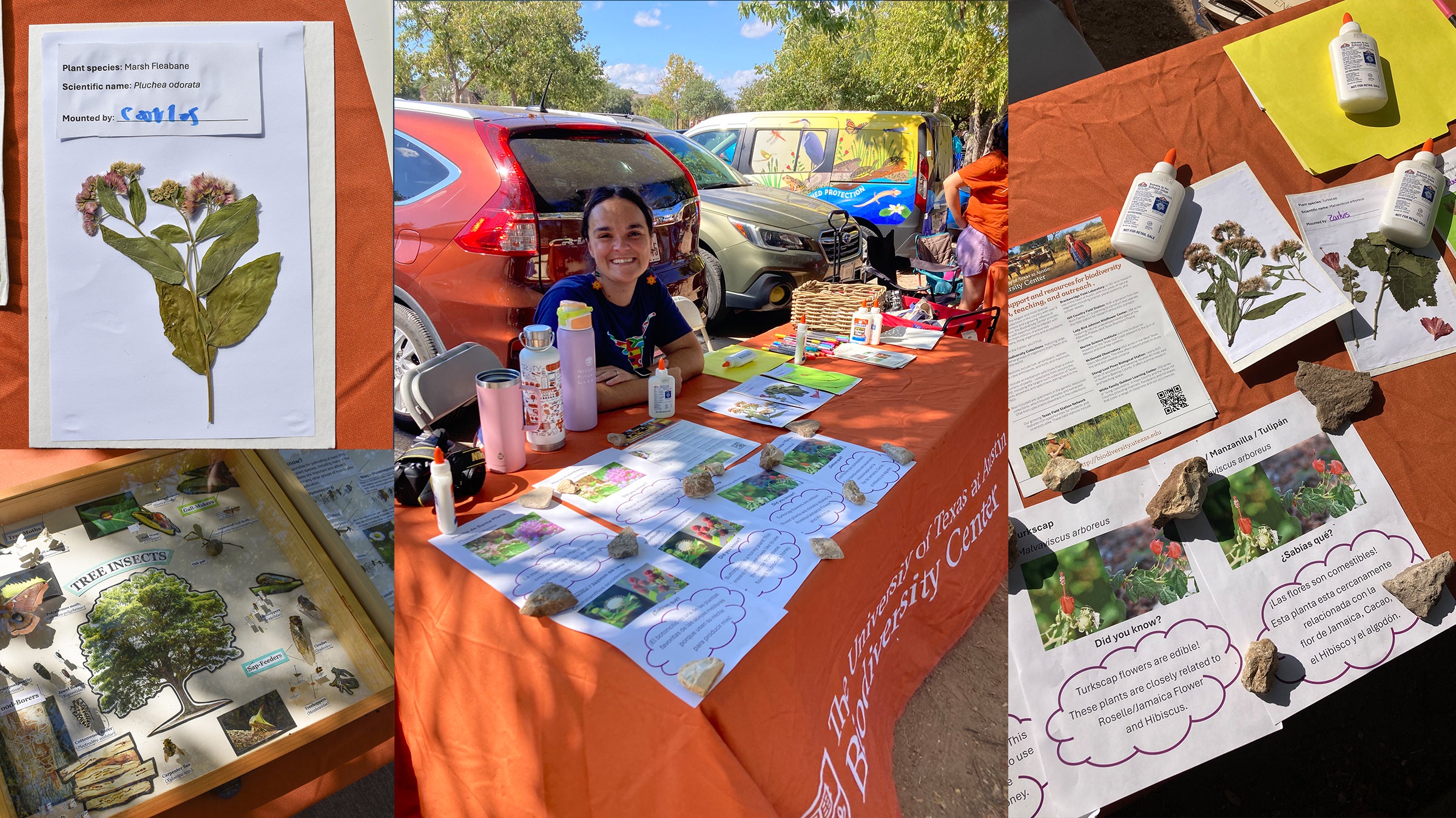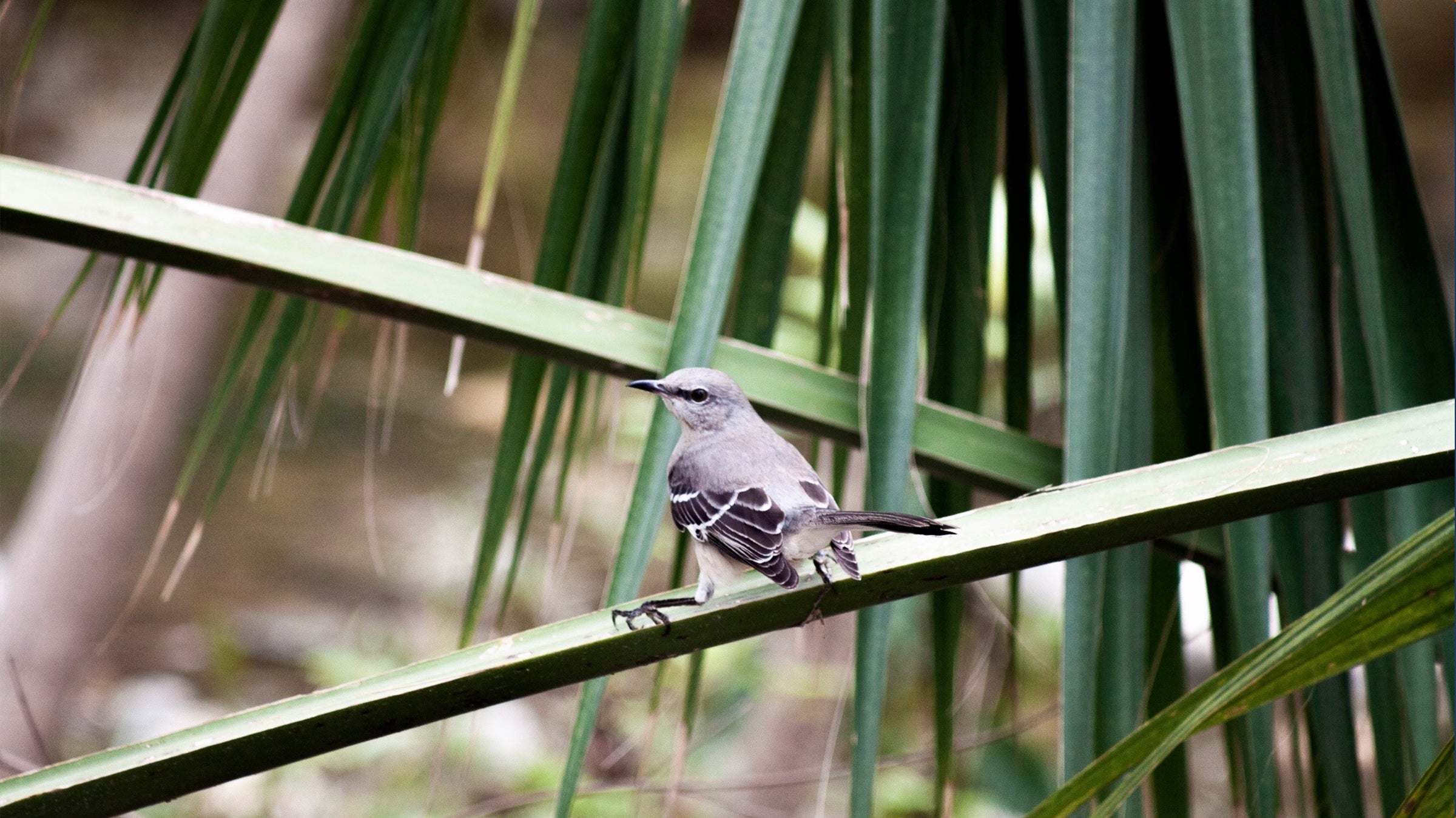
Photo: Kathryn Gatliff
The Northern Mockingbird is probably one of the easiest birds to identify, if not by their bold maneuvers to protect their territory, then certainly by their characteristic song. In fact, their scientific name Mimus polyglottos is based entirely on their vocal natures: “mimus” is Latin for mimic and “polyglottos” from Ancient Greek poluglottos, "harmonious", from polus, "many", and glossa, "tongue."
Northern Mockingbirds are the only mockingbird commonly found in North America. In Texas, where they are the state bird, they are around all year long. On campus, they are pretty conspicuous as they can be spotted high in the boughs of campus trees, perched on telephone wires, or chirping away on UT’s numerous parking restriction street signs.
At this time of year, if you wake up before sunrise to start your coffee or take an ambitious jog, you’ll probably hear one chirping away outside. This is an unmated male, anxious to attract a mate, and he will begin singing early in the morning and well into the night. In fall, however, both sexes will sing to claim their winter feeding territories.
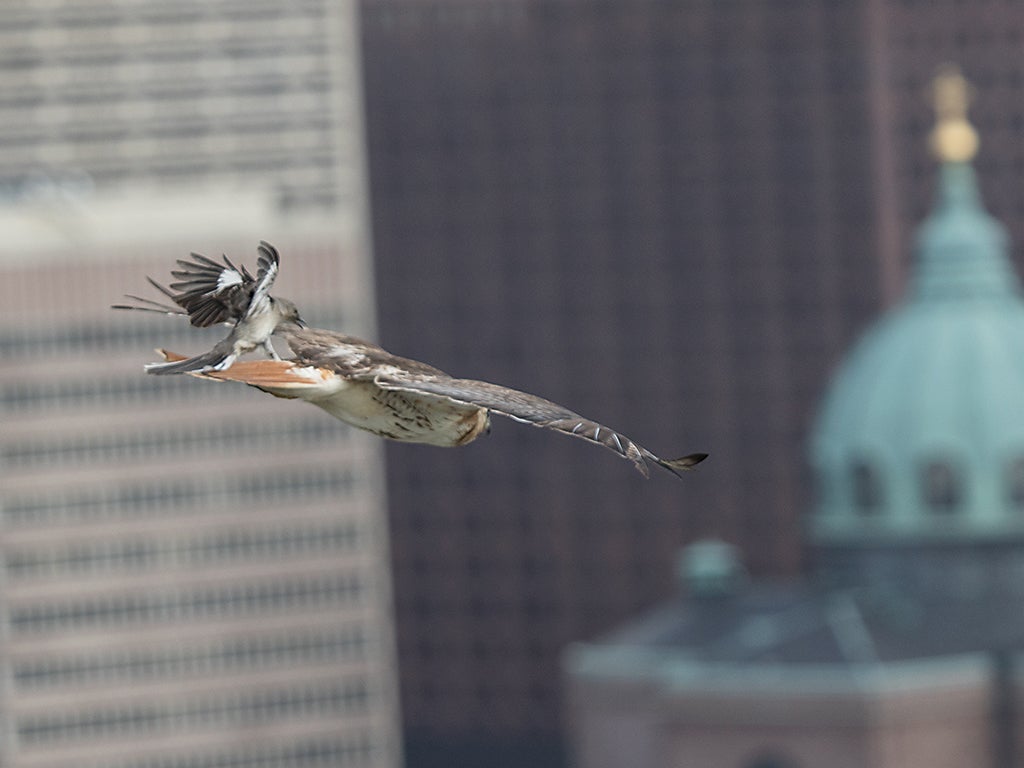
Mockingbird chasing off a Red Tailed Hawk (Photo: Chuck Homler-Focus on Wildlife)
The Northern Mockingbird’s song is its most distinct trait. The song is actually a series of repeated phrases strung together. These birds can mimic the song of 50 other birds, those whose pitch and vocalization are similar to their own. They also mimic things not always so bird like: rusty gates, barking dogs, and hen cackles. The song consists of these mimicked noises in addition to mockingbird-specific ones. Some studies suggest that song variety actually may help males when it comes to finding the perfect mate. Females, who are always evaluating their mates, are more attracted to males that have a wide repertoire of sounds for their song palette. An idea probably not lost to some rockstars of the human variety.
It had been thought that Northern Mocking birds are “open-ended” learners, meaning during their adult years, they can continue to learn new song patterns to mimic. However, some recent research does challenge this idea, seeming to suggest that Northern Mockingbirds learn songs during their youth, as most birds do.
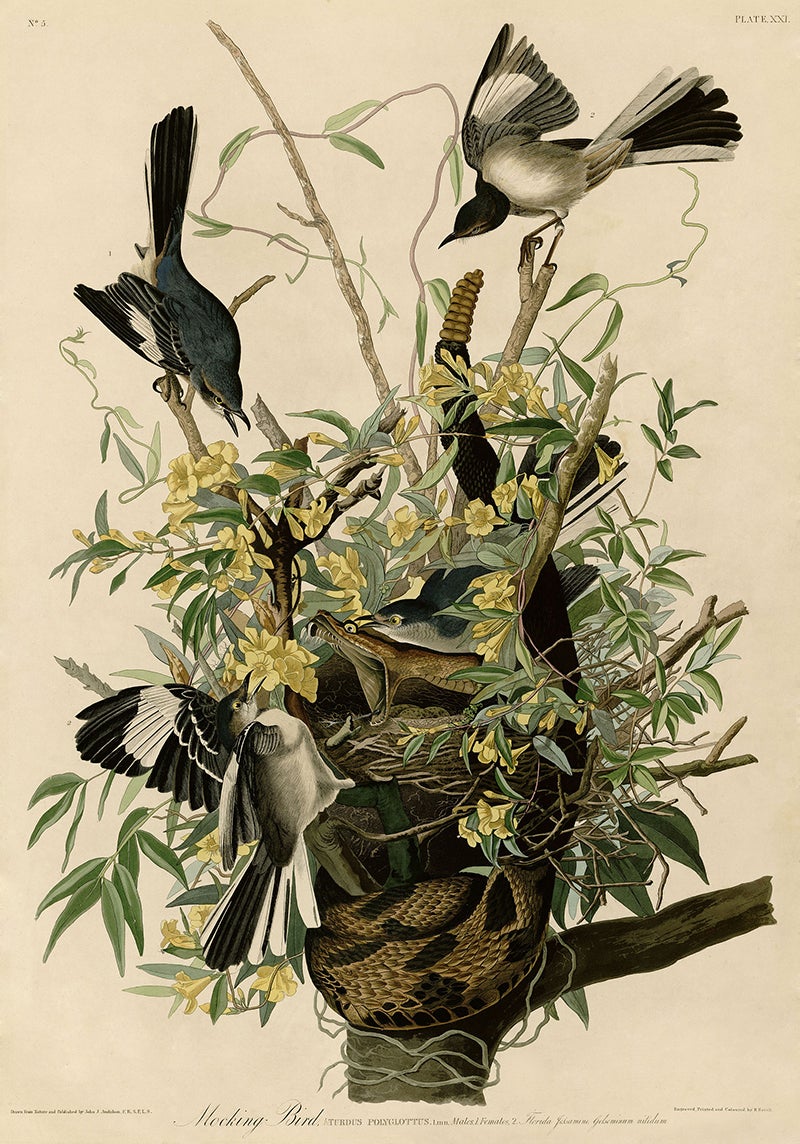
Plate 21 of Birds of America by John James Audubon depicting Mocking Bird.
The birds have been noted for their intelligence. They can recognize individual human beings, particularly ones that have posed a threat to them. They can also remember how to return to their successful breeding areas year after year.
The birds are omnivores, and eat insects and fruit, occasionally a lizard. They also can eat garden vegetables, which don’t always make them a favorite with gardeners as they discover their heirloom tomatoes have been picked at. However, gardeners might like to know that Northern Mockingbirds do keep down harmful insect populations.
The males and females look alike and share in parental responsibilities. During nesting season, both birds build the nest and feed the young. The female is the sole incubator of the eggs, which number from three to five. When the nestlings fledge, mama bird will begin to build a new nest, while papa bird will continue to feed the young birds and teach them how to fly. A pair can produce two to four broods a season.
Another distinctive feature of the Northern Mockingbird is how aggressive it can become with whatever it perceives as a threat, particularly during nesting season. This can include chasing off birds of prey many times their size, and even unsuspecting mail carriers as happened to a Tulsa, Oklahoma carrier in 2007. So persistent were the attacks that the neighbors posted warning signs about the bird.
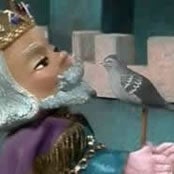
King Friday and his pet, mimus polyglottos
Northern Mockingbirds are beloved in US culture. In addition to the Lone Star State, the bird is also the aviary representative for four other southern states: Arkansas, Tennessee, Florida, and Mississippi. It shows up in countless popular songs, folk tunes, and literature. In the 1960 novel, To Kill a Mockingbird by Harper Lee, a key character romanticizes the bird with: “They don't do one thing for us but make music for us to enjoy.” Thomas Jefferson, third president of the United States, owned a pet mockingbird named “Dick.” And even the TV show Mister Rogers’ Neighborhood had a mockingbird, in the form of a wooden bird belonging to the puppet, King Friday. It's name, of course, was "Mimus polyglottos."
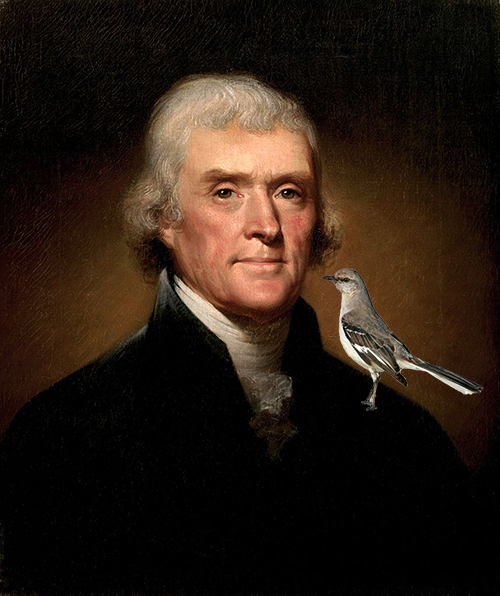
THOMAS JEFFERSON HAD A BIRD
Jefferson, the third president of the United States, adored birds, and had four Northern Mockingbirds while in office. His favorite amongst them was a bird he named "Dick the Mockingbird." Jefferson venerated the mockingbird so much, that in a letter to his son-in-law upon hearing he had spotted one, Jefferson wrote back: "I sincerely congratulate you on the arrival of the mockingbird. Teach all the children to venerate it as a superior being which will haunt them if any harm is done to itself or its eggs.
Jefferson was known to let Dick the Mockingbird sit on his shoulder while he would work at his desk. It was also said the he trained the bird to take food he had put between his lips. Jefferson would also let the bird sing him to sleep, after following him up the stairs to his room. It seems that Dick also joined in song while Jefferson would play the violin.
SOURCES
Dick the Mockingbird, Wikipedia (accessed online: https://en.wikipedia.org/wiki/Dick_the_Mockingbird)
Mimus polyglottos, Animal Diversity Web, University of Michigan Museum of Zoology (accessed online https://animaldiversity.org/accounts/Mimus_polyglottos/)
Northern Mockingbird (Mimus polyglottos) Texas Parks and Wildlife (accessed online: https://tpwd.texas.gov/huntwild/wild/species/mockbird/)
Russell-Robertson, Mary. “Mockingbirds Can Learn Hundreds of Songs, But There’s a Limit” Living Bird magazine, Spring 2016.
Northern Mockingbird, Wikipedia (accessed online: https://en.wikipedia.org/wiki/Northern_mockingbird_



